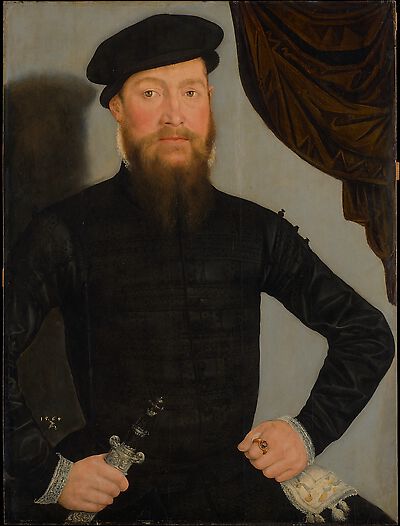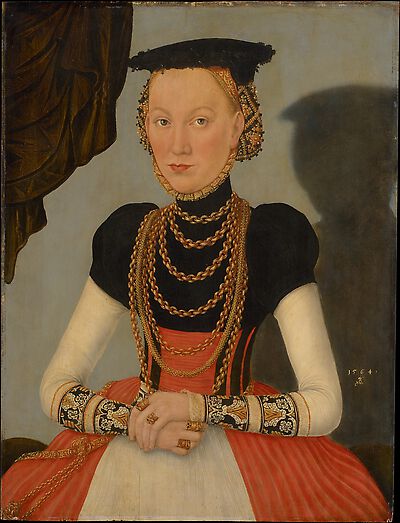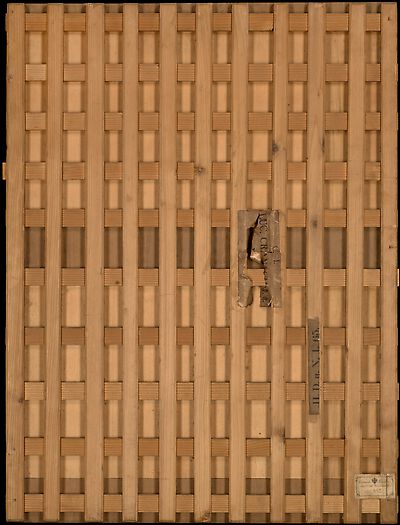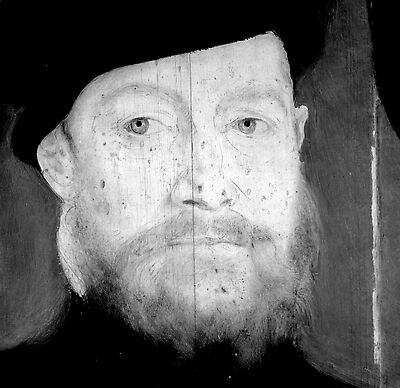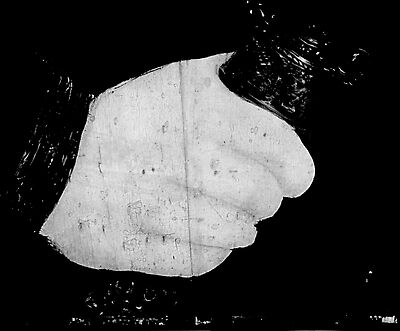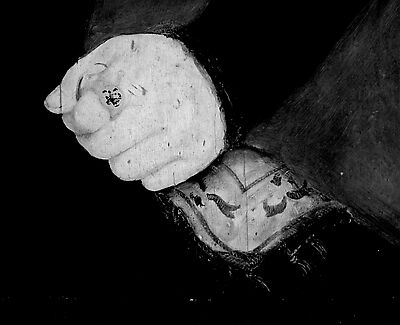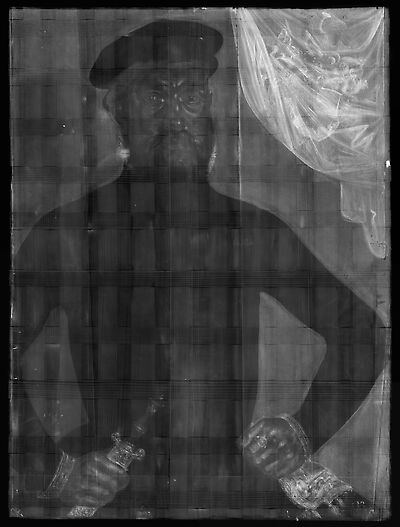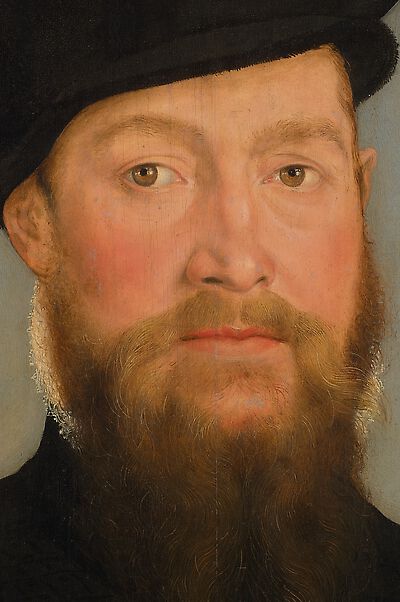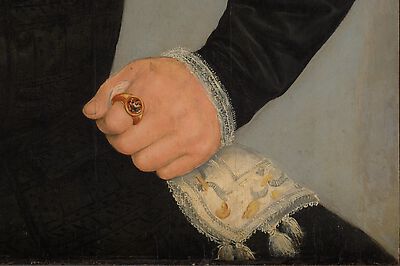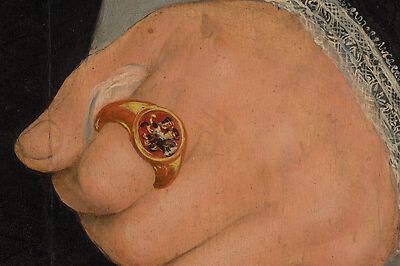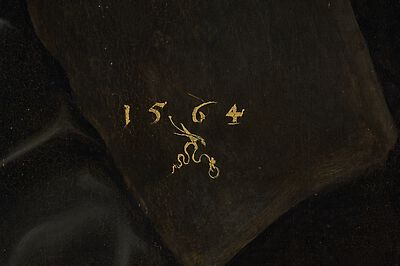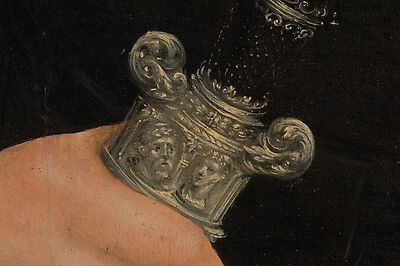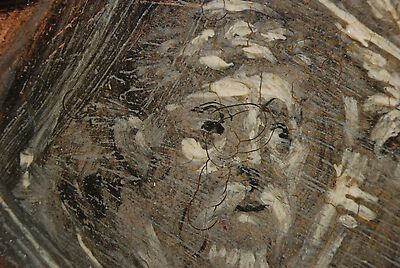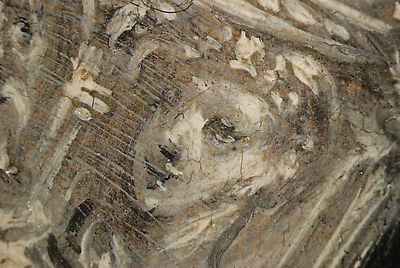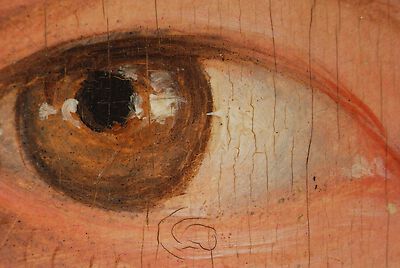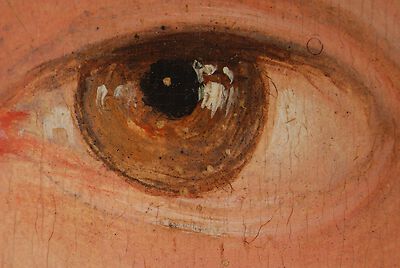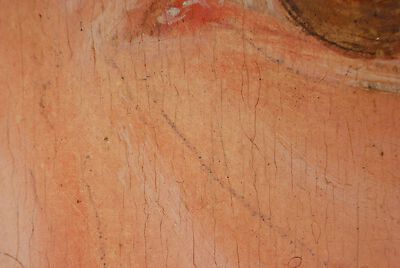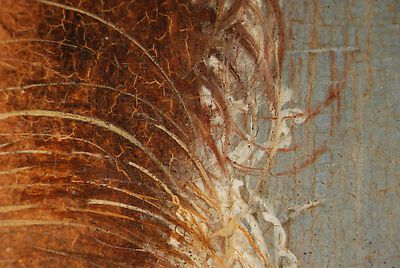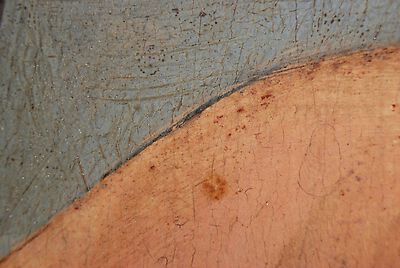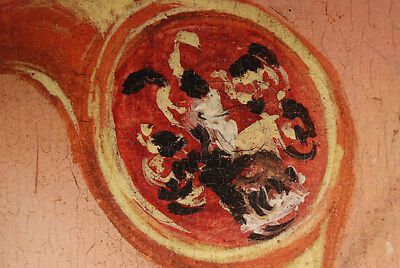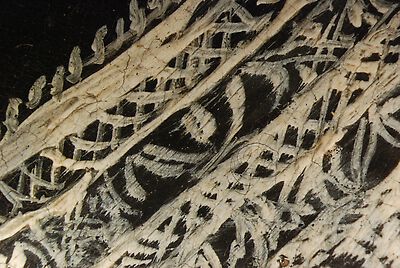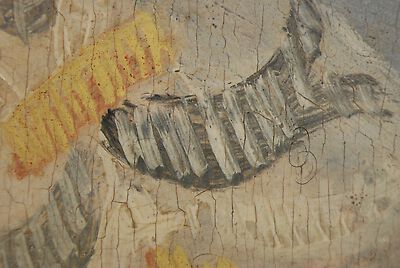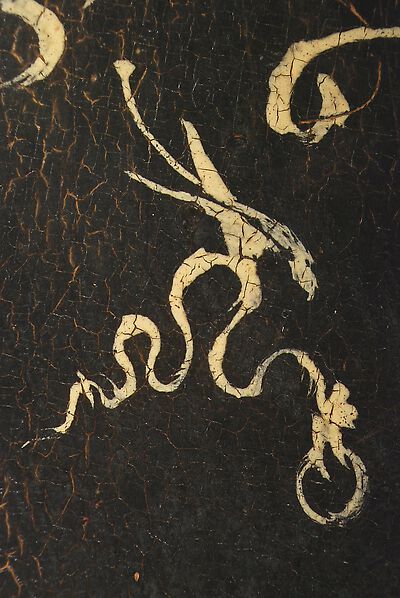| Exhib. Cat. Prague 2016 |
123 |
|
|
| Editor | Olga Kotková |
|---|
| Title | Cranach. Ze všech stran. From all sides. |
|---|
| Place of Publication | Prague |
|---|
| Year of Publication | 2016 |
|---|
| Pages | 16-180 |
|---|
|
| Hoppe-Harnoncourt 2012 |
paragraph 5 |
|
Fig. 8 |
| Author | Alice Hoppe-Harnoncourt |
|---|
| Title | The Restoration of Paintings at the Beginning of the Nineteenth Century in the Imperial Gallery |
|---|
| Journal | CeROArt, Hors series La restauration des oeuvres d'art en Europe entre 1789 et 1815. Pratiques, transferts, enjeux |
|---|
| Year of Publication | 2012 |
|---|
| Link |
http://ceroart.revues.org/2336 |
|
| Exhib. Cat. Vienna 2011 |
136 |
No. 73 |
|
| Editor | Christof Metzger, Sabine Haag, Karl Schütz |
|---|
| Title | Dürer, Cranach, Holbein. Die Entdeckung des Menschen das deutsche Porträt um 1500 [Kunsthistorisches Museum, Vienna, 31 May 2011 - 4 Sept. 2011, Kunsthalle der Hypo-Kulturstiftung Munich, 16 Sept.-15 Jan. 2012] |
|---|
| Place of Publication | Munich |
|---|
| Year of Publication | 2011 |
|---|
|
| Exhib. Cat. Vienna 2010 |
106 |
No. 166 |
|
| Author | Gudrun Swoboda |
|---|
| Editor | Sabine Haag |
|---|
| Title | Starke Köpfe. Porträts des Kunsthistorischen Museums, [Kunsthistorisches Museum, Vienna] |
|---|
| Place of Publication | Vienna |
|---|
| Year of Publication | 2010 |
|---|
|
| Cat. Vienna 1991 |
47 |
|
Plate 599 |
| Author | Wolfgang von Prohaska, Sylvia Ferino-Pagden |
|---|
| Editor | Karl Schütz |
|---|
| Title | Die Gemäldegalerie des Kunsthistorischen Museums in Wien. Verzeichnis der Gemälde |
|---|
| Series | Führer durch das Kunsthistorische Museum |
|---|
| Volume | 40 |
|---|
| Place of Publication | Vienna |
|---|
| Year of Publication | 1991 |
|---|
|
| Exhib. Cat. Brughe 1984 |
94, 95 |
|
Fig. 42 |
| Editor | Paul Huvenne |
|---|
| Title | Pierre Pourbus, maître brugeois, 1524 - 1584, [Musée Memling, Hôpital Saint-Jean, Brughe] |
|---|
| Place of Publication | Brughe |
|---|
| Year of Publication | 1984 |
|---|
|
| Friedländer, Rosenberg 1979 |
|
429 (and under No. 427) |
|
| Author | Max J. Friedländer, Jakob Rosenberg |
|---|
| Editor | G. Schwartz |
|---|
| Title | Die Gemälde von Lucas Cranach |
|---|
| Place of Publication | Basel, Boston, Stuttgart |
|---|
| Year of Publication | 1979 |
|---|
|
| Schade 1974 |
103 |
|
Pl. 238 |
|
|
| Cat. Vienna 1973 |
51 |
|
pl. 131 |
| Editor | Klaus Demus |
|---|
| Title | Verzeichnis der Gemälde |
|---|
| Series | Führer durch das Kunsthistorische Museum |
|---|
| Volume | 18 |
|---|
| Place of Publication | Vienna |
|---|
| Year of Publication | 1973 |
|---|
|
| Exhib. Cat. Vienna 1972 |
33-34 |
No. 28 |
Fig. 27 |
| Author | Karl Schütz |
|---|
| Editor | Kunsthistorisches Museum, Wien |
|---|
| Title | Lucas Cranach der Ältere und seine Werkstatt. Jubiläumsausstellung museumseigener Werke 1472-1972 |
|---|
| Place of Publication | Vienna |
|---|
| Year of Publication | 1972 |
|---|
|
| Osten, Vey 1969 |
309 |
|
Plate 280 |
| Author | Gert von der Osten, Horst Vey |
|---|
| Title | Painting and sculpture in Germany and the Netherlands 1500 to 1600 |
|---|
| Series | Pelican History of Art |
|---|
| Volume | 31 |
|---|
| Place of Publication | Harmondsworth, Middlesex |
|---|
| Year of Publication | 1969 |
|---|
|
| Cat. Vienna 1963 |
40 |
No. 118 |
|
| Author | n. a. |
|---|
| Title | Katalog der Gemäldegalerie. 2, Vlamen, Holländer, Deutsche, Franzosen |
|---|
| Series | Führer durch das Kunsthistorische Museum |
|---|
| Volume | 8/2 |
|---|
| Place of Publication | Vienna |
|---|
| Year of Publication | 1963 |
|---|
|
| Exhib. Cat. Graz 1953 |
28 |
No. 42 |
Fig. 15 |
| Editor | Landesmuseum Joanneum, Graz |
|---|
| Title | Dürer und seine Zeit. Meisterwerke der deutschen Malerei des 16. Jahrhunderts. Sonderausstellung der Gemäldegalerie des Kunsthistorischen Museums, Wien im Steiermärkischen Landesmuseum Joanneum, Graz [Steiermärkischen Landesmuseum Joanneum, Graz] |
|---|
| Place of Publication | Graz |
|---|
| Year of Publication | 1953 |
|---|
|
| Lilienfein 1942 |
102 |
|
Fig. 134 |
| Author | Heinrich Lilienfein |
|---|
| Title | Lukas Cranach und seine Zeit |
|---|
| Place of Publication | Bielefeld |
|---|
| Year of Publication | 1942 |
|---|
|
| Cat. Vienna 1938 |
43 |
No. 1469 |
|
| Author | n. a. |
|---|
| Title | Kunsthistorisches Museum: Katalog der Gemäldegalerie |
|---|
| Series | Führer durch das Kunsthistorische Museum |
|---|
| Volume | 8 |
|---|
| Place of Publication | Vienna |
|---|
| Issue | Second edition |
|---|
| Year of Publication | 1938 |
|---|
|
| Friedländer, Rosenberg 1932 |
93 |
347 (and under No. 345) |
|
|
|
| Cat. Vienna 1928 |
59 |
No. 1469 |
|
| Author | n. a. |
|---|
| Title | Kunsthistorisches Museum: Katalog der Gemäldegalerie |
|---|
| Series | Führer durch die Kunsthistorischen Sammlungen in Wien |
|---|
| Volume | 8 |
|---|
| Place of Publication | Vienna |
|---|
| Year of Publication | 1928 |
|---|
|
| Glaser 1923 |
212, Fn. p. 235 |
|
|
|
|
| Cat. Vienna 1907 |
339 |
No. 1469 |
|
| Author | n. a. |
|---|
| Title | Kunsthistorische Sammlungen des allerhöchsten Kaiserhauses: Die Gemäldegalerie. Alte Meister |
|---|
| Place of Publication | Vienna |
|---|
| Year of Publication | 1907 |
|---|
|
| Cat. Vienna 1896 B |
427-428 |
No. 1469 |
|
| Author | n. a. |
|---|
| Title | Kunsthistorische Sammlungen des allerhöchsten Kaiserhauses: Die Gemälde-Galerie. Alte Meister. Mit 120 Illustrationen |
|---|
| Place of Publication | Vienna |
|---|
| Year of Publication | 1896 |
|---|
|
| Cat. Vienna 1892 |
379-380 |
No. 1517 |
|
| Author | n. a. |
|---|
| Title | Kunsthistorische Sammlungen des allerhöchsten Kaiserhauses: Führer durch die Gemäldegalerie. I. Theil. Gemälde alter Meister |
|---|
| Volume | 1 |
|---|
| Place of Publication | Vienna |
|---|
| Year of Publication | 1892 |
|---|
|
| Scheibler 1887 |
297 |
|
|
|
|
| Cat. Vienna 1886 |
60-61 (Bd. 3) |
No. 1492 |
|
| Author | Eduard von Engerth |
|---|
| Title | Gemälde. Beschreibendes Verzeichnis. Kunsthistorische Sammlungen des Allerhöchsten Kaiserhauses |
|---|
| Volume | 1 - 3 |
|---|
| Place of Publication | Vienna |
|---|
| Year of Publication | 1886 |
|---|
|
| Waagen 1866 |
171 (Bd. 1) |
Nos. 65, 66 |
|
| Author | Gustav Friedrich Waagen |
|---|
| Title | Die vornehmsten Kunstdenkmäler in Wien. Erster Theil: Die k.k. Gemälde-Sammlungen im Schloss Belvedere und in der k.k. Kunst-Akademie, Die Privatsammlungen |
|---|
| Volume | 1 |
|---|
| Place of Publication | Vienna |
|---|
| Year of Publication | 1866 |
|---|
| Link |
https://mdz-nbn-resolving.de/details:bsb10800311 |
|
| Cat. Vienna 1858 |
121 |
No. 65 |
|
| Author | Erasmus Engert |
|---|
| Title | Catalog der k.k. Gemäldegallerie im Belvedere zu Wien |
|---|
| Place of Publication | Vienna |
|---|
| Year of Publication | 1858 |
|---|
|
| Cat. Vienna 1837 |
208-209 |
No. 65 |
|
| Author | Albrecht Krafft |
|---|
| Editor | Kunsthistorisches Museum, Wien |
|---|
| Title | Verzeichniss der kais. kön. Gemälde-Gallerie im Belvedere zu Wien |
|---|
| Place of Publication | Vienna |
|---|
| Year of Publication | 1837 |
|---|
|
| Cat. Vienna 1783 |
251 |
No. 62 |
|
| Author | Christian von Mechel |
|---|
| Title | Verzeichnis der Gemälde der kaiserlich königlichen Bilder Gallerie in Wien. verfaßt von Christian von Mechel der kaiserl. königl. und anderer Akademien Mitglied nach der von ihm auf allerhöchsten Befehl im Jahre 1781 gemachten neuen Einrichtung |
|---|
| Place of Publication | Vienna |
|---|
| Year of Publication | 1783 |
|---|
|
